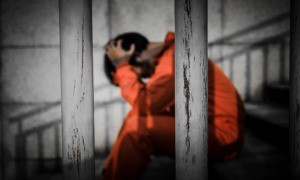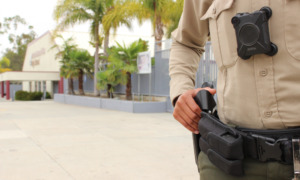Funding
***The Bureau of Justice Statistics (BJS) surprised many in the field this week by soliciting a new proposal. The agency will fund one group at about $500,000 to help develop and conduct data collection for a survey of states regarding juveniles charged in adult courts, the first federally-funded attempt at gathering information about that population in more than a decade.
This is a big deal for juvenile advocates opposed to certain (or all) transfer statutes because, in a lot of ways, they currently have to operate with only anecdotes and snippets of data.
Transfer laws “were originally intended to go after the most serious offenders,” said Liz Ryan, executive director of the Campaign for Youth Justice. “We would like to know what’s actually happened with these laws and how many kids every year are dealt with in adult court.”
The first federal attempt to look at juveniles in adult systems, which was published in 1998, revealed a lot about the racial disparity in juvenile transfers and about the nature of the crimes committed by transferred youth. At the time, two-thirds of the juveniles handled in adult court were there for violent felony offenses, and 63 percent of the youth in adult court were black males.
The new survey, based on a sample of about 12,000 cases from 120 jurisdictions, will include misdemeanor offenders as well as felons, which right off the bat will give a more accurate indication of the volume. The guess is that about 200,000 juveniles are handled in adult court every year, but it’s really just an educated guess.
Even more important, Ryan believes, is the potential that the survey will drill down to case-specific trends with this population. It would be the first opportunity to explore, for example, how many transferred youth are there for their first offense. Another likely question to be answered: How many transferred youth ended up getting convicted of a charge that, had it been the original charge against the juvenile, may not have warranted a transfer in the first place?
We know that Howard Snyder, the chief of the BJS Recidivism, Reentry and Special Projects Unit, wants to use more modern technology to link the federal agency to a more seamless flow of information from states and counties–a flow that would not entail expensive and work-intensive data collections. So the hope here is that the sample-based survey will help BJS figure out how to ultimately collect universal information on adult court-involved juveniles every year.
Don’t expect a quick result from this survey. It will likely be at least two years, probably more, before a finished survey comes out of this effort. Anyone interested in the solicitation can click here for details; deadline to apply is June 1.
***The Department of Labor’s Employment and Training Administration is looking for grant applicants interested in working with young adult offenders and high school dropouts in high-crime areas. The proposed programs must work with people between ages 18 and 24. The plan is to make two awards of $10 million, which will cover a six-month planning period and two years of operation. A proposal must include plans for five required activities: connection to employment, mentoring, case management, education and restorative justice.
Click here for details on the solicitation. You have to hustle though, the deadline is May 10!
News
*** “Positive Youth Justice: Framing Justice Interventions Using the Concepts of Positive Youth Development” is a really interesting paper released today by the Coalition for Juvenile Justice, which makes the case for the use of positive youth development (PYD) approaches in juvenile justice.
Study authors Jeff Butts and Gordon Bazemore argue that treating young offenders purely as villains, who are in need of punishment, is pointless from the perspective of improving their chances to be productive citizens. Conversely, treating them purely as victims, who are in need of treatment, does not entirely prepare them to be productive adults either.
PYD approaches, say Butts and Bazemore, have the best chance to accomplish what most juveniles need: building on their strengths and connecting them to the community they live in. In this paper, the authors posit a framework for PYD in juvenile justice systems and thoughts on how to implement such an approach. They also offer some examples of existing attempts at using PYD with juveniles.
***The next meeting of the Coordinating Council on Juvenile Justice and Delinquency is April 16. The last meeting featured cameos from several cabinet members, let’s see who shows up for this go-round.
By the way: We are now at 441 days and counting without an OJJDP nominee, about 30 percent of a presidential term. The last two candidates we heard much buzz around were New Orleans Judge Ernestine Gray and New York Office of Child and Family Services Director Gladys Carrion. JJ Today has heard from credible sources that Carrion is not interested, so we wouldn’t be surprised to see Gray announced as the nominee.
***Two JJ-related award winners worth mentioning:
Tufts University Senior Dean Ladin won the university’s Presidential Award for Citizenship and Public Service for his management of a juvenile diversion program housed the Middlesex County (Mass.) district attorney’s office.
California State-Monterey Bay film students Juan Ramirez, Stephen Sprague, Ashley Paolini and Isaac Castro took home Best Student Documentary at the International Family Film Festival for “Concrete Paradigm,” which featured detainees at the Salinas (Calif.) Juvenile Hall reading their poetry.
Research
***The Texas Public Policy Foundation issued a report that looks at cost-effective measures to reduce juvenile crime. One item that JJ Today wants to explore in depth is a study authored by Marc Levin concerning Capital and Serious Violent Offender Treatment Program at the Giddings facility. The re-arrest rate for juveniles released from all Texas juvenile prisons is about 56 percent, and the re-arrest rate for the violent offender program is FIVE percent. Huh? Hopefully Levin can shed some light on why the state doesn’t just put all its eggs in that basket and have most of their locked-up offenders go through a similar program. No doubt it is costly, but you know what else is costly? Locking up half of the kids you release from jail a year later!
Headlines
***Ohio will allow youths to obtain protection orders against other youths, the fruits of a law passed in reaction to a young woman who was shot to death by her ex-boyfriend. This is one of those laws where you wonder if the follow-through will be way, way more complex than anyone expects. Judges can order electronic monitoring of any youth that is the subject of an order, which could become expensive. And if the orders are made such that the two youths in question cannot be at the same school, that could become a logistical and political nightmare.
It all really comes down to how the judges handle these requests. If these protection orders are given out liberally, the guess here is this law is a fiasco in the making. If judges use a very conservative approach to deeming protection orders necessary, maybe not.
***Two youths committed suicide in jail this month, Devon Blake Patterson of Alabama and Shaquan Welfare of Connecticut.
***Washington Wizards star Gilbert Arenas, much maligned in the nation’s capital for bringing a gun into the Wizards’ arena, decided to mentor juveniles in the city’s secure facility in Laurel, Md., as part of the community service ordered by the judge in his case.
***South Dakota is joining the JDAI family in an attempt to lower its absurdly high rate of juvenile incarceration, reports Argus Leader’s Peter Harriman.





























